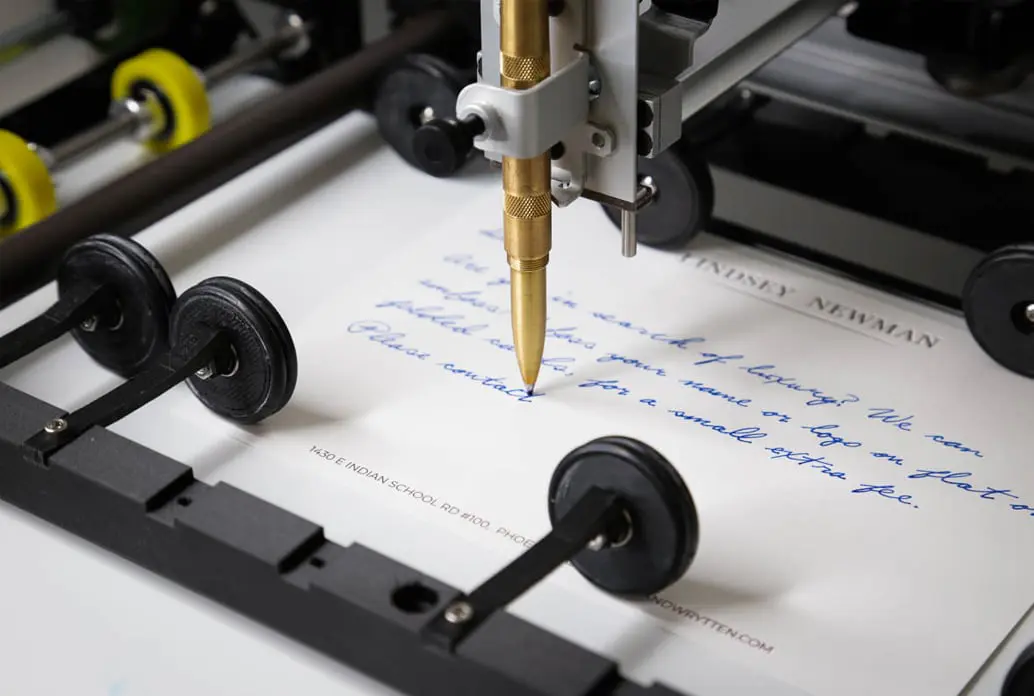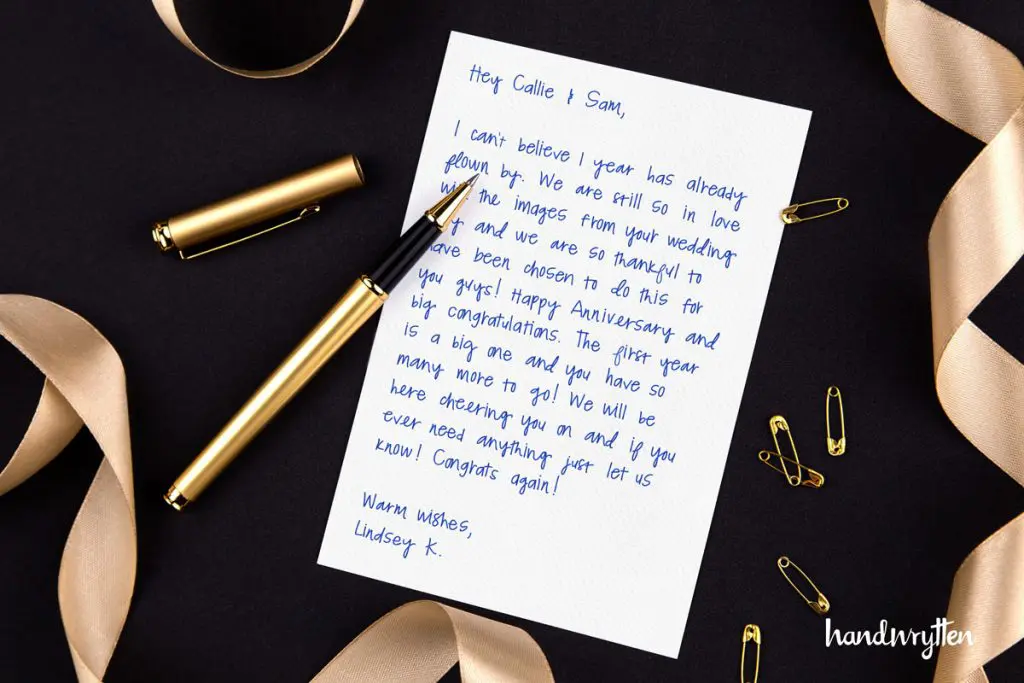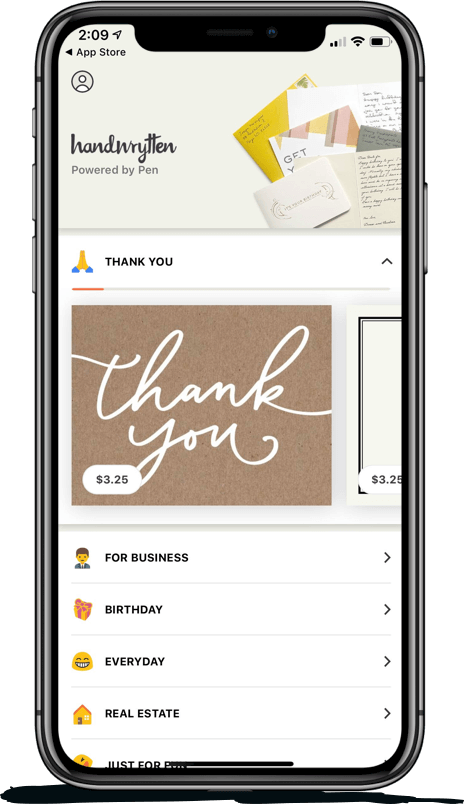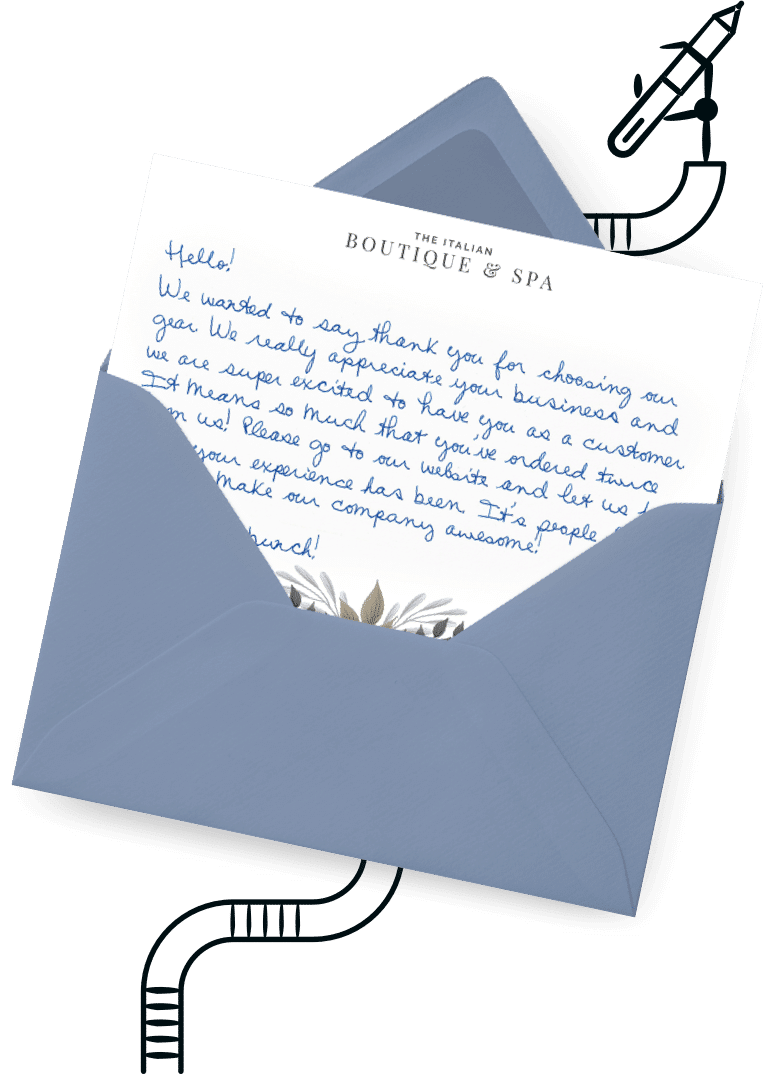
9280 S. Kyrene Rd.
Suite 134
Tempe, AZ 85284
Phone: +1 (888) 284-5197
Email: contact@handwrytten.com



You have been subscribed. Thank you!
In the age of impersonal emails, a handwritten letter with a great salutation can make you stand out from the crowd. Handwritten letters feel so much more personal and are a great way to build long-lasting professional relationships.
Your salutation sets the tone for everything that follows in your letter. Your handwritten correspondence should be personalized with varying salutations to suit each relationship. In this article, we will discuss the most common salutations for various business letters and tips for how to choose them.

Here are the eight most common business letters and the best common salutations to use for each one:
Your correspondence with potential clients should never sound impersonal and copied, even if you have never met. If you are organizing a targeted campaign to contact potential clients, the salutation “Dear” is always appropriate, followed by the proper title “Ms., Mr., Mrs.” and the contact’s last name.
If you don’t have contact information, you can use the opener “Greetings” if your letter is casual or “To whom it may concern” for something more formal.
When writing to potential investors, your tone should always be professional, formal, and specific. “Dear Mr./Mrs.” is an appropriate salutation. If your contact has an official title, be sure to include it in the address at the top.
After an initial meeting with a potential client, investor, or employee, be sure to follow up with a handwritten letter. A follow-up note with the right salutation can help your professional relationship flourish. The common salutation “Dear” followed by your contact’s full name is formal yet friendly enough for this situation.
If you have just cemented a professional relationship with a new client, be sure to follow up with a personalized thank you note. When addressing a letter to one person, “Dear” is appropriate, followed by their full name. If you are writing to a vendor or group, use something like “To our new partners at” with the name of the organization.
A letter is a great way to congratulate and encourage the employees you can’t live without. If you know employees well and your work environment is informal, your salutation can be a friendly “Hello,” “Greetings,” or “Hi.” If your company’s culture is more formal, always use “Dear” followed by the employee’s full name.
Which salutation you use in customer correspondence depends on your relationship. If you are close and friendly with your customers, then something less formal, such as “Greetings” or “Hello” may be used. If your business relationship with customers is more formal, then stick with “Dear.” No matter which opener you use, your greeting should always include the customer’s full name. Avoid using impersonal openers such as “To whom it may concern” or “To our valued customer.” Business thank you notes are a great way to show your customers that you value their business and their patronage.
If you are organizing an event and want to rent a venue, always try to get the proper contact information and use it in your salutation. “Dear” followed by the contact name is appropriate in this situation. If the venue doesn’t have a specific person in charge of rentals, you can use the less personal “To whom it may concern.”
After renting a venue, be sure to send a thank you card to the specific person who handled your rental. Address your thank you note to “Dear” followed by their name.
Birthday or holiday cards that are personalized and look handwritten are a great way to encourage employees and deepen business partnerships. The usual salutation is “Dear” followed by the contact’s full name, but you can also use the less formal “Hello” or “Hi” for more personal relationships.
Follow these tips for creating business letters that stand out from the crowd with common salutations:
Handwritten cards are a refreshing change from the impersonal emails so common today. If you want to communicate with clients in a more personal way, but don’t have the time to write notes by hand, Handwrytten is your solution. At Handwrytten, we specialize in creating personalized letters using modern technology. Our unique robots write in pen and we can even add your actual signature. Contact us today to create personalized messages that stand out from the crowd.


Scale your handwritten outreach, creating positive impressions and long lasting bond.
Sign Up Today!


Over 100 designs to choose from or design your own. Our online card customizer makes it simple.
Check Out Our Cards!





